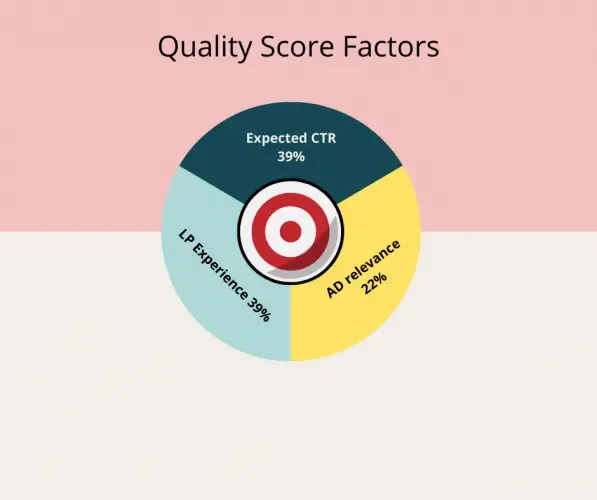Every marketing expert will confirm that Google Ads is one of the most effective platforms for PPC advertising campaigns.
Business owners looking for ways to improve eCommerce performance and increase sales are constantly asking questions that we need to answer:
What makes Google's ecosystem so well-performing and fast-growing? - How does Google charge for ads and can it promise a return on investment? - What determines the effectiveness of PPC ads? - Google ads are so successful and popular because they give businesses what they need - active users who are part of the Google ecosystem on a daily basis.
With PPC ads on the Display Network, YouTube, Google Discover, Google Shopping, and Gmail, we can reach millions of users on a monthly basis, depending on the business and its field.
However, before Google can guarantee a minimum of 4 times the return (and it will), you need to make sure that your online business can meet important criteria that Google sets.
The success of your Google Ads depends on a good user experience. In other words, Google cares about the quality that users get when they search for something.
We can measure this success by the effectiveness of advertising campaigns and individual ad groups.
And high efficiency means there is a good Quality Score.
In this article, you'll learn how to pay less for Google per click, while ranking your ads in good positions.
Wondering how it works?
Assume that Google thanks us for a job well done as a digital marketer.
What is Quality Score and how does it affect paid ads?
The impact of quality score on google ads, query position on google ads, the position of SERP results shown, the relevance of keywords on google ads, good ad text, relevant ad group. Both in the real world and in the digital world, in order to get results, a number of other actions must be taken that prove that we really deserve them.
When it comes to paid advertising on Google, one of the most important indicators is the so-called Quality Score.
Quality Score is a mechanism used by Google to assess the relevance (appropriate use) of keywords/phrases and single PPC ads.
Analyzing several important components, Google gives a Quality Score rating of 1 to 10, which determines the effectiveness of ad groups.
The position that the ads will have is directly influenced by the rating they will receive. That's why a golden rule applies to Google Ads:
High-Quality Score - better ranking in search results and lower cost per click
Quality Score is a combination of several components that together create a rating system.
Elements of Quality Score
Quality Score as an indicator is made up of several elements that aim to measure the overall performance of your ad campaigns and groups.
In order for the evaluation to be objective, the Google algorithm uses as a basis the relevance of:
Keywords and phrases used in ad groups and individual ads; The single ads themselves; The URLs that direct users to a landing page; Landing page - ie. Whether consumers have ended up in the right place.
Google also considers two other elements when generating the Quality Score:
The status of your Google Account - its presentation from the moment of creation; Click-Through-Rate (CTR) metrics.
Interesting?
Google's algorithm is guided by these criteria and determines what Quality Score your ads will receive because its task is to provide relevant content to each user's search.
The Click-Through Rate (CTR) indicator gives a strong indication that users value what you provide through paid advertising. When your CTR is high, more users actually click on your ad, and Google reports this action.
Factors that affect the Quality Score
You can probably guess what are the factors that influence the formation of the Quality Score from 1 to 10.
In the following lines you will find out not only what these factors are, but also why Google chose them.
These factors that affect quality score: Google ads quality score, quality score in Google ads, landing page experience, expected CTR, click through rate, ad relevance, relevance of Google advertising, expected number of clicks, quality of landing page
Consumer experience
The user experience is a major factor that affects the Quality Score and Ad Rank that your ad will receive.
If you want your ads to appear on the first page of Google, you should definitely pay attention to Quality Score, because it depends on another parameter called Ad rank - ranking.
The consumer experience is rightly one of the main factors that affect the overall performance of your Google ads.
Imagine that your potential customer is Annie. She searches Google Search for a specific product: a short-sleeved denim jacket.
What Annie is interested in - she has already given a clear sign. She expects Google to show her the best search results. And Google is a good helper and will make sure to complete this task.
However, will Annie be happy if, clicking on your ad, she finds herself on a product page with denim shorts?
Probably not. That's why it will come out quickly, which will reduce your Quality Score.
Is it possible for Annie to open an ad whose URL describes a radically different product?
Without SEO-friendly URLs, ie. those that show the user exactly where he will go, the possibility of acquiring a new customer is minimal.
Therefore, there is no need for complex mathematical formulas when calculating the Quality Score.
The concept is simple:
The user searches for a keyword. You have a product that meets the needs of the consumer. You offer it appropriately with the right ones: keywords, ad texts, product descriptions, a supported and relevant landing page.
And if the URL path matches the user's search or at least is close to it, we create great conditions to attract a customer.
Click-Through Rate
Let's go back to the Click-Through Rate (CTR) metric. Why does Google take this into account when creating the Quality Score?
Because for the tech giant, this is a possible way to predict how satisfied consumers are with your ads.
In the world of Google, there is an unwritten rule that sounds like this: The more people see your ad and open it in a given amount of time, the more relevant and useful content you provide to them when you land on that landing page.
Quality Score formula
There is no complicated mathematical formula for calculating the Quality Score.
To calculate a rating from 1 to 10, Google makes a sum between the user experience and the percentage of the relevance of yours:
- Landing page;
- The relevance of ad groups;
- CTR expectations.
The formula by which you can calculate the Quality Score takes into account the weight of each of the three elements.
Here's what it looks like:
Quality Score = 1 + Landing Page Weight + Ad Relevance + CTR Weight
Or, in common terms, the formula is as follows:
Quality Score = 1 + Landing page experience weight + Ad relevance weight + CTR weight
What do we gain with a higher Quality Score?
Improving the Quality Score is not an easy task, but it is definitely worth paying special attention to.
Proper analysis of the status of your advertising campaigns will save you not only headaches but most of all money.
Want to control unprofitable budget spending?
Improve your Quality Score.
By optimizing your Quality Score, you will be able to balance and control costs.
Raise another important metric - Return On Investment (ROI).
When you improve the relevance of each Quality Score element, you save money in several ways:
You don't have to pay more to Google to rank your ads in better places. The high CTR (Click-Through Rate) signals to Google that the ads (the combination of keywords, SEO good URLs, ad texts and landing pages) page) give you value to users.
Conversion costs will decrease. For Google Ads, a good Quality Score is both a measure of efficiency and a financial measure. The more optimal it is, the less you will be charged for a conversion.
The cost-per-click is lower. Again, the same principle: when your ads meet the needs of your users, Google will lower the average cost-per-click for you.
How to improve the Quality Score?
The position and location of your ads on Google Ads will appear, which are a good motivator to focus on the development of your account as a whole.
5 Tips for a Better Quality Score
If you are wondering how to save money or at least invest it properly, then these 5 tips can help you:
Keyword analysis.
Always take the time to check which keywords are relevant. Remember that new and more practical keywords may appear to use. The analysis is not to be underestimated, because improving the relevance can lead to better quality traffic on the site.
Divide and structure keywords into separate ad groups. We know that it is easier to put everything in one place, but this is not an appropriate move, but a disastrous action that will ruin the results of the campaign. When you're done with the analysis, try splitting your keywords into segments, groups, or individual stand-alone campaigns. The purpose of this subsequent separation is not to lose focus and efficiency.
Imagine launching a Google Ads campaign for an online women's clothing store.
You probably sell dresses, pants, shirts, T-shirts, jeans, etc. The idea of creating separate ad groups is to split the searches of individual users and make the content relevant.
For example, in the Women's Clothing campaign, there may be separate ad groups for each product category.
Dresses can be ball, casual, evening, party or summer, but should not be placed as keywords in an ad group.
Otherwise, by adding all keywords with all matches, we do not fulfill the condition that the keywords match the ad group.
Remember that the user wants to see exactly what he is looking for. And your task is to reach it through advertisements and attract it.
Test different messages / descriptions in ad texts. There is no formula to guarantee that anyone who opens your ad will inevitably become a customer. But try to make the ad texts relevant and as accurate as possible to the user's request.
Optimize landing pages.
However, this is where the user should go after opening your ad. The speed with which it will load is extremely important. Otherwise, in case of delay and lack of user interaction with the site, Google will negatively report this instant "exit".
Decide which is the correct landing page compared to the other components - keywords, URLs, user search. Remember that even if a user clicks on your Google ad, your work is not over. You have to make sure that he likes the content he consumes on the respective landing page.
Fast and convenient navigation - to easily navigate users on the site
Feedback or a link to your site so they can learn more information and interact with the brand; The page should be readable by Google crawlers crawling it.
Add negative keywords.
If you have fulfilled the above points, then it's time for a pro tip - work with negative keywords.
The truth is that no matter how precise we are, there will always be some poor quality traffic, which affects the Quality Score.
Adding negative keywords is a good practice to help clear such traffic. Excluding irrelevant keywords or searches that have nothing to do with your business will reduce the possibility of a low Quality Score.
Extra Pro Tip: Keep track of what users are looking for and what requests your ads appear on, so you can optimize your account and campaigns in a timely manner.

Do mobile versions affect Quality Score?
Consumers are spending more and more time scrolling on mobile devices. This means that you have to be faster than them.
Google considers the distance between the user and your business based on location extensions.
How so?
Make sure your site and landing pages load quickly because mobile devices strongly influence the Quality Score you receive.
You can improve the Quality Score for mobile devices by using appropriate extensions and CTA (Call-To-Action).
An example of such an extension is "Contact Us" tab with a contact form or telephone number. This will allow the user to connect with you faster than going through the whole process.
Don't underestimate the functionality of extensions, especially when it comes to their impact on Quality Score ratings.
Quality Score Vs. Ad Rank - main differences
Although at first glance Quality Score and Ad Rank is exactly the same, there are differences between them. The fact is that the feature of both metrics is to improve the performance of your campaigns.
Quality Score gives you information on how your chosen keywords, ad groups, and landing pages perform. Thanks to this tool you can quickly find out what you need to optimize.
Ad Rank, on the other hand, is the way Google optimally gets more information about the performance of your account.
The data analyzed by Google is its assistants, which determine where and in which part of the displayed searches your ads appear.
In forming Ad Rank, Google is influenced by much more widespread and concentrated factors such as:
The value you give as a bid The competitiveness of the auction The context of consumer demand, ie. from which device the user searches, location, keyword search method The presentation of other displayed ads Additional extensions to ads and other formats
Do both metrics sound the same to you?
They can easily get confused.
What has definitely impressed you is that Ad Rank has the same determinants as the Quality Score.
That's right. But remember that Ad Rank is not directly influenced by the Quality Score.
We can determine that Quality Score is an independent metric, which in itself is a strong indicator of the effectiveness of advertising campaigns.
The relationship between the two metrics - Ad Rank and Quality Score - is that they use similar parameters to make an accurate analysis.
Interestingly, even with a high Quality Score, your ads may not appear at all in the top positions in the user's display results (SERP - search engine results page).
Why does a high Quality Score not necessarily mean advertising in good positions? Let's illustrate with an example: your Quality Score of an ad for men's winter coats is 8/10, but it does not appear in the desired place in the results.
Google, what are you doing? 8/10 Quality Score and bad position!
Yes, Google surprises you, and you're disappointed because you've chosen quality and relevant keywords for your ads, and you also have a well-structured landing page with useful content.
The bad position of the ads in this situation is due to low bid - low bid.
Remember that bidding is one of the influencing factors in Ad Rank - Ad Rank?
Optimize this indicator wisely and you will be satisfied, but do not stop improving the Quality Score factors.
Bidding must be sensible. It is sometimes used unfairly by some Google Ads advertisers who think that bidding more on a keyword will definitely get them the positions they want.
The reality is not like that.
No matter how much you pay Google, if you do not offer quality content to users and do not comply with the requirements for Quality Score, you will only pay - to no avail. And in time you will lose the paid position.
The bottom line is that it is not advisable to ignore either metric. Remaining in the background, the Quality Score indirectly worsens the factors influencing Ad Rank.
Don't want bad results and performance? However, you pay Google for this - let them be on a level and it, as we said, will reward you with lower prices for conversions and clicks and better positions.
Quality Score: Conclusion
The road to a good position in Google search results (SERP) is not easy.
It turns out that you can't bid on a keyword for long because you will be caught due to bad Quality Score factors. And you can't give low clicks.
What to do?
Take care of your users :).
Give them the most relevant content they need, and most of all, they've signaled that they need it.
Optimize your landing pages, because that's where they'll go when they click on your ad.
Choose the right keywords. Always check what users are looking for in the "Search Terms" menu.
Create relevant ad groups and messages to get users' attention. However, each user searches for a product or service in an individual way.
Make sure that if Annie is looking for a "complete sports swimsuit" - get a result relevant to her request.
And to open your ad, use the right keywords, creative messages, current extensions, the right link.
When she opens the ad, she can't help but choose you because you give her a landing page with quality content, easy navigation, a convenient contact form and good conditions.
Provide as complete an explanation as possible about your product or service. Expand your ad text and make the most of the character limits in Google Ads.
Don't underestimate the power with which creatives can improve the performance of your PPC ad.
You already know the interesting techniques used by experts to improve the Quality Score and the performance of paid ads in Google Ads. In order to achieve the success you want, it will be useful for you to learn more about keywords, optimization of your site and other useful articles.

Nadejda Milanova
An experienced Content creator in the field of Search Engine Optimization (SEO) and WordPress. A true proffesional with a Master's degree focused on journalism.
Read more by Nadejda Milanova





